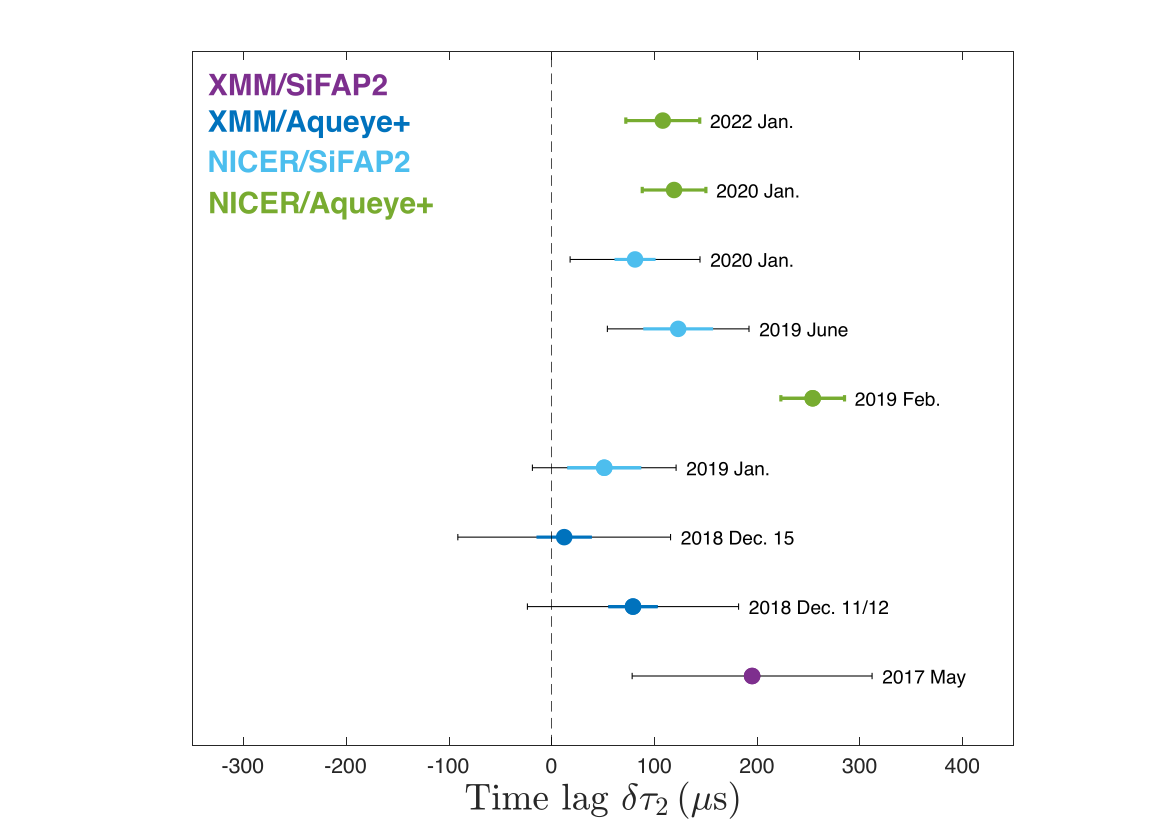Time lags between optical and X-ray pulsations from a millisecond pulsar
Measuring the very short time lags between optical and X-ray pulsations from a fast spinning millisecond pulsar, PSR J1023+0038 - with four different instruments and telescopes, including the fast optical photometer SiFAP2 mounted at the Telescopio Nazionale Galileo (TNG) - a team of researchers has provided important information to reconstruct the complex geometry of the system and the physical process at the origin of the pulsations.
Millisecond pulsars (MSPs) are the quickest spinning stars with a solid surface in the Universe: in only one second they spin around their axis hundreds of times and emit beams of radiation from their poles as a cosmic lighthouse. There are two different classes of MSPs: radio pulsars are powered by the rotation of their intense magnetic field, while the emission of X-ray pulsars is powered by the accretion of matter transferred by a companion star.
A few decades ago, transitional MSPs were discovered, switching back and forth in a few days or less between radio and X-ray pulsar states. In 2017 SiFAP2, the Silicon Fast Astronomical Photometer and Polarimeter mounted at the TNG, detected for the first time ever optical pulsations from the prototype of transitional millisecond pulsar, PSR J1023+0038 (https://www.tng.iac.es/news/2017/10/16/pulsar/).
This discovery suggests that the two mechanisms described above can work simultaneously: to explain the high pulsed optical luminosity, it was proposed that a radio pulsar is active in the system despite the presence of an accretion disk (https://www.tng.iac.es/news/2019/09/13/pulsar/).
To thoroughly investigate the origin of the pulsations from this source, the authors estimated the time lags between optical and X-ray pulses using simultaneous observations acquired over about five years with NICER and XMM-Newton X-ray telescopes and with SiFAP2, mounted at the 3.6m TNG, and Aqueye+, mounted at the 1.8m Copernicus Telescope, fast optical photometers. So, how can these measurements of the time lag help us to better understand the enigmatic nature of J1023? Although the estimated values for this delay are not always the same (small variations are expected due to oscillations of the inner radius of the accretion disc), the time lags are always in a very limited range of values, a few hundred microseconds.
This supports the hypothesis that optical and X-ray pulsations originate roughly in the same region and that they have a common emission mechanism.
The observed delay gives us important indications on the process at the origin of the optical and X-ray pulsations from this source and on the geometry of the system. According to the proposed model, electrons are accelerated at very high speeds in the region where the pulsar wind meets the accretion disk and then emit according to the synchrotron mechanism interacting with the strong magnetic field present in this region. Optical and X-ray pulsations would thus be produced by the synchrotron mechanism, which presents different emission times for optical photons and for those in X-rays, because of their different energies, of about 200 microseconds. The team of researchers will continue to perform these studies on this millisecond pulsar and similar sources to better understand the origin of optical and X-ray pulsations and the geometry of these fascinating systems.

Figure: Time lags of the optical pulsations compared to the X-ray ones measured with NICER and XMM-Newton X-ray telescopes from space and, from the ground, with the fast optical photometers SiFAP2 and Aqueye+. Credits: G. Illiano et al., A&A, 2023.
More information at the paper: https://doi.org/10.1051/0004-6361/202244637

